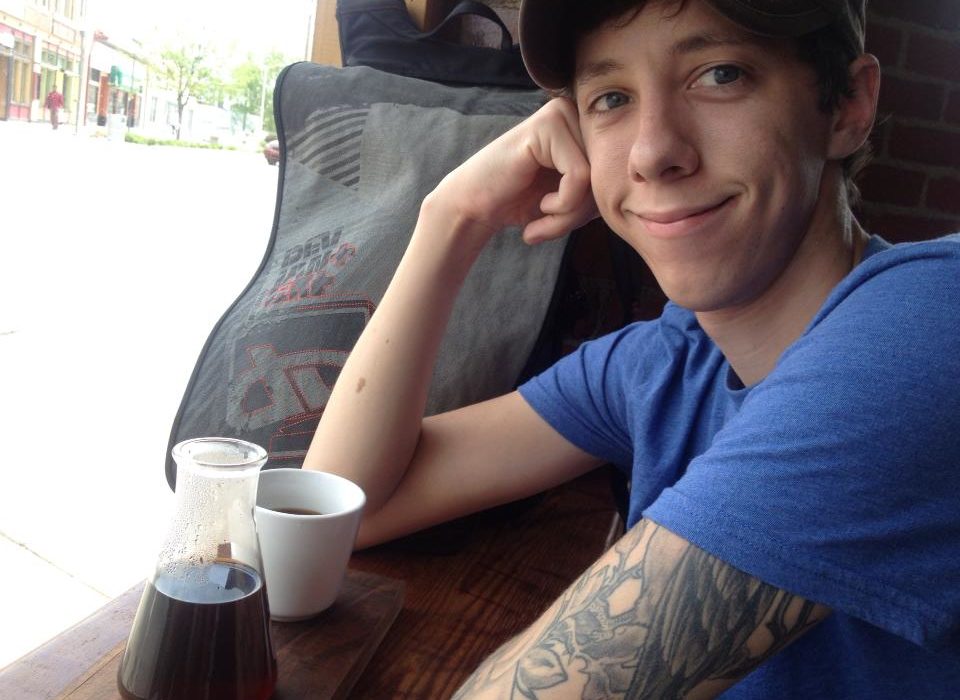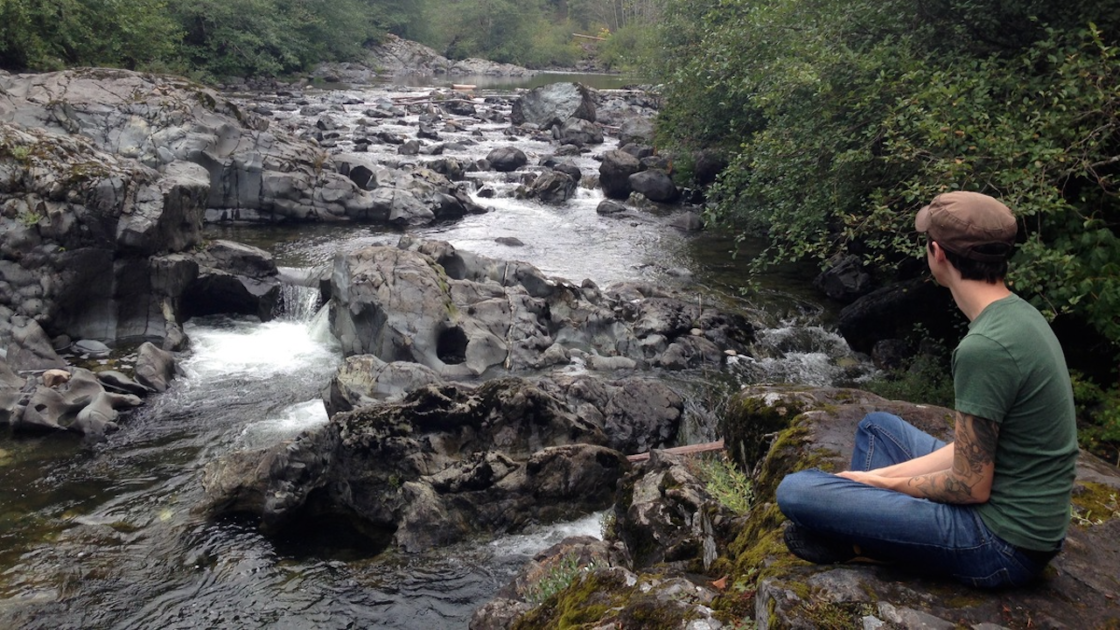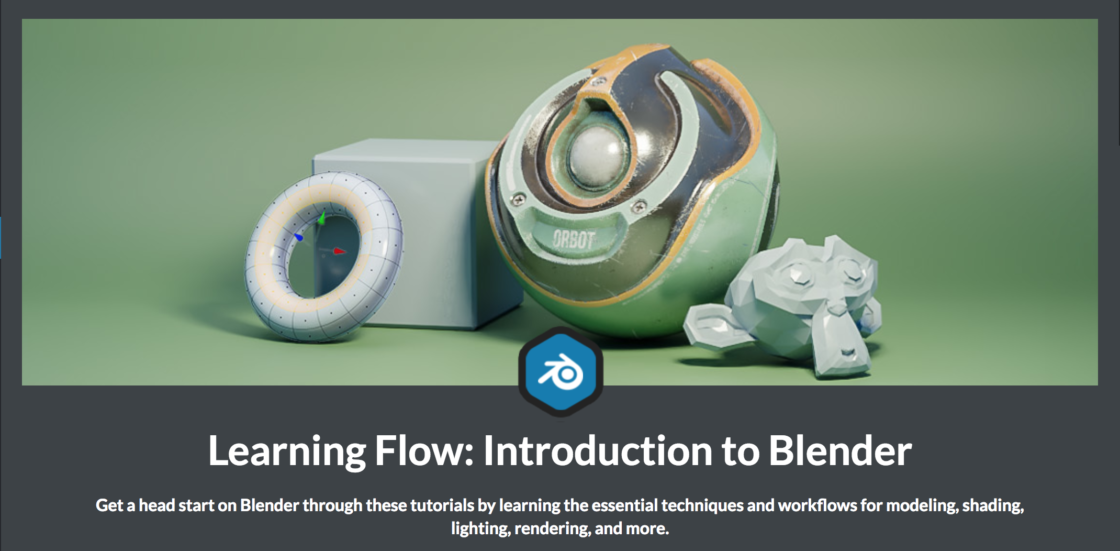
Jonathan Williamson is living the dream. Well, a very startup-y, open source version of the dream. Eight years ago, when he co-founded the creative community and learning platform CG Cookie, the goal was to serve the Blender community as a tutorial author. Now, after years of growth, he’s the company’s COO, and a respected figure among users of the open source design software. Though entirely unschooled, Jonathan has become the kind of educator that didn’t exist when he taught himself 3D modeling as a teenager — one who actually understands the joys and pitfalls of the journey from total novice to expert. He recently shared more about his passion for CG Cookie’s education mission, Blender, the Open Source movement, and helping artists build sustainable businesses.
What was the first thing you designed in Blender?
I don’t quite remember, but the first things I remember trying to make were X-Wings and Light Sabers. Star Wars was always a huge inspiration for me and it was attempting to re-create X-Wings that made me fall in love with 3D and Blender.

A Pteranodon model by Jonathan, created for a tutorial in 3D Artist Magazine
What made you decide to teach yourself Blender? Did learning it this way make it easier for you to teach others?
There was never a conscious decision to teach myself, it’s just what I did. I was unschooled, with a lot of time to play and experiment, so when I got interested in Blender it seemed normal to dive head first! In the early days I invested 8-10 hours a day in teaching myself. At that time there also wasn’t hardly any training material available for Blender and so teaching myself was one of the only options.
I’m not sure self-teaching helped me teach others any better than other education paths, but what it did do was allow me to form my own opinions and workflows. This could have been detrimental of course, but at that time 3D modeling was far less understood and the common workflows weren’t very well established (outside of production studios, much less online).

Having time to play and daydream was a huge part of Jonathan’s unschooled childhood
How do CG Cookie users inspire tutorial creation? Is there a back-and-forth, or do you rely on your own encyclopedic (literally, since you wrote a book) knowledge of Blender?
It is always a back-and-forth! Most of the time tutorial inspiration would come from a question or a piece of artwork. Invariably someone will ask a really good question that makes us think, “I wonder how we could do that….” Those are the problems I like to tackle — ones with no clear answer or direction.
Over the last decade, you went from a Blender Certified Trainer to Co-Founder and Chief Operating Officer of CG Cookie. How has the Blender community evolved since then? What are some memorable milestones, and how has CG Cookie been a part of that evolution?
The Blender Community has evolved immensely, mostly through maturation. The number of skilled artists and developers actively involved in Blender today is unparalleled. I believe the biggest change in the last decade has been respect. The community as a whole, and the artists and developers that make up the community have earned a much larger degree of respect in the last decade. Largely due to the continued, persistent work of everyone involved and the increasing quality of work that’s constantly being produced.
One key contributor to this are Open Movie projects such as Cosmos Laundromat.
We’re seeing the entire community and ecosystem around Blender maturing and growing.

Get started in Blender with CG Cookie’s Intro to Blender Learning Flow
A lot of people find it hard to take the leap from idea to 3D model. What advice would you give to these tentative beginners? Any CG Cookie tutorials you would recommend?
I’ve found that one of the biggest hurdles for new artists can be grasping 3D digital space. Most people find immersive environments, like video games, to be totally natural but it can be difficult to make the shift to creating in digital space. This is where a good grasp of 3D space can be exceptionally helpful. I like to recommend people to take a ceramics or sculpting class, which makes a great parallel. The main difference is simply that you’re working with your hands rather than a mouse or tablet; the concepts of form area all the same.
For tutorial recommendations I’ll also suggest people start with our Introduction to Blender learning flow. It takes you through all of the essential fundamentals and basic techniques.
How does 3D printing impact your designs? Do you model with 3D printing in mind?
3D Printing alters my entire workflow, so I try to always decide whether 3D printing will be in the equation for the current project before starting. Due to the technical differences, creating a model for printing is very different than for animation. You can take a lot of short cuts that wouldn’t work in animation. You also have to keep in mind the limitations, such as water-tight models and wall thickness. It changes the criteria by which you evaluate a model, and thus how you create one.
At CG Cookie, what are you most excited about right now?
I’m most excited about the [CG Cookie-built] Blender Market! We have been growing it for the last three and half years and it’s starting to really pan out.
From day one I have always been passionate about independence. The freedom of Open Source and the independence that comes with it was one of the original things that drew me to Blender. As my career developed over the years I came to focus on helping independent artists and developers succeed. The Blender Market is the result of that focus, providing a platform for Blender creators to build sustainable businesses that both support them and give back to the community as a whole.



I think other website owners should take this website as an model, very clean and fantastic user friendly
design and style.